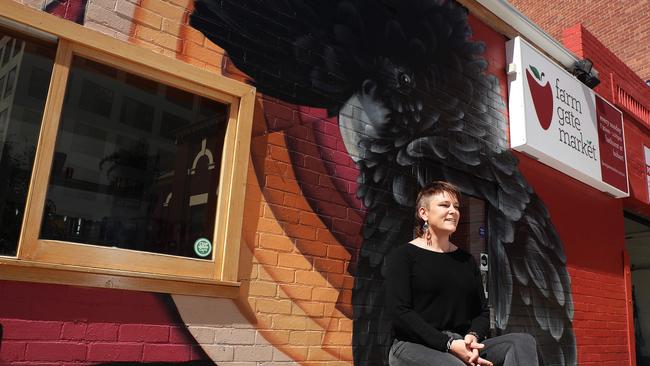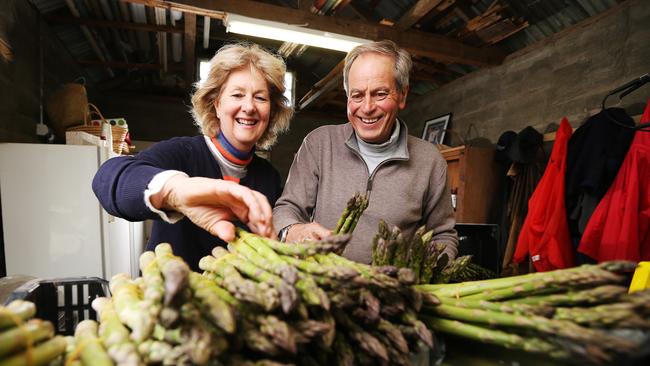The Hobart Farm Gate market turns 10, and pumps a huge amount into economy
Hobart’s beloved Farm Gate market has become a Sunday ritual over 10 years, and it pumps a huge amount into the local economy each year.
Lifestyle
Don't miss out on the headlines from Lifestyle. Followed categories will be added to My News.
FROM little things big things grow. Farmers know it and Hobart has witnessed it — watching the Farm Gate Market flourish from a few stalls in a carpark to become one of the city’s top attractions.
The market will this Sunday celebrate its tenth anniversary, marking a decade that started slow but has grown to become a Sunday ritual that pumps $18 million into the economy annually.
Tomorrow will be even more bustling than usual, with storytellers mingling with the crowd and a long communal table down the centre to entice people to stay longer.
Farm Gate manager and owner Madi Seeber-Peattie said it had been satisfying to see the markets grow from small beginnings to its current success.
She said the slow start was because of her own tough rules, as she refused to create an overnight success that wasn’t an authentic farmers’ market.’

One of the rules of the market is that all items on sale must be grown or produced in Tasmania. The stalls also have the growers and producers on site — rain, hail or shine — selling their own wares. Mrs Seeber-Peattie has never given an inch of stall space to the imported products that proliferate at most markets.
SUSHI MASTER MASAAKI KOYAMA EXCITED BY HIS NEW RESTAURANT
Ms Seeber-Peattie said she was at a farmers’ market in Victoria last week that sold funky shopping bags made with recycled materials — but they would never be allowed in at the Hobart Farm Gate Market because they were made in Thailand and they hadn’t been grown by farmers.
“Our principals are very strict: if you can’t eat it, drink it or grow it, then you can’t sell it.”
She said many similar markets around Australia had an 80:20 rule, where they were allowed to sell 20 per cent of someone else’s produce as long as 80 per cent was their own.
“We decided that’s not the way we want to go. It’s hard to manage and impossible to police.”
It meant the markets had to evolve slowly, as the strict rules meant restricted produce.
“At first it frustrated people who came to the market. People would want raspberries in winter and we’d say come back in spring.
“But we’ve educated them that eating what’s in season is better for them and better for our growers.”

The markets began in the former Melville Street carpark, but moved to Bathurst St in 2014 to make way for the University of Tasmania’s accommodation complex.
Mrs Seeber-Peattie said the move, made possible with the help of Hobart City Council, had been good as the markets were now closer to the city.
The annual turnover at the markets has grown to $8-9 million a year, and the attraction is estimated to pump a total $16 million into the economy.
TASMANIA’S MOST DELICIOUS RESTAURANTS
With a commerce degree behind her and a background in events management, Mrs Seeber-Peattie has used her skill-set to help local producers by offering them a way of selling their wares and telling their stories.
“These guys are so busy on the farm they don’t have time for the marketing side of their business.”
It has resulted in producers growing more, as they have had the confidence to test new crops and products because of the ready band of regular buyers.
“We went into this wanting to reinvigorate local producers, and it has.”
Although Mrs Seeber-Peattie has no farming background at all, she understands marketing and knows how to stage an event.
“I love business, but I have no luck growing basil,” she said.


